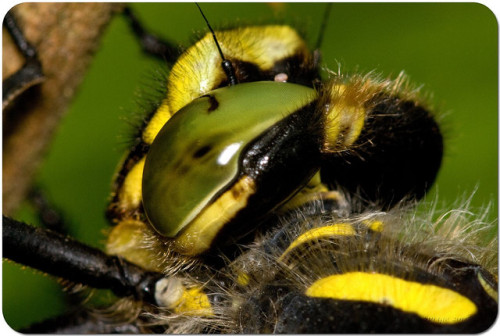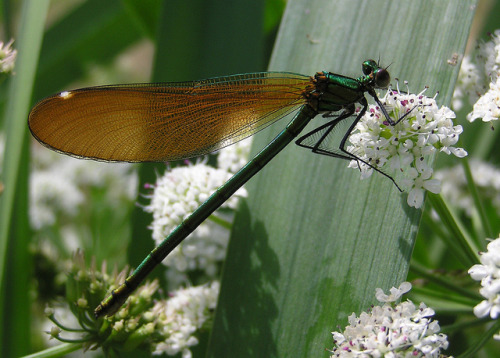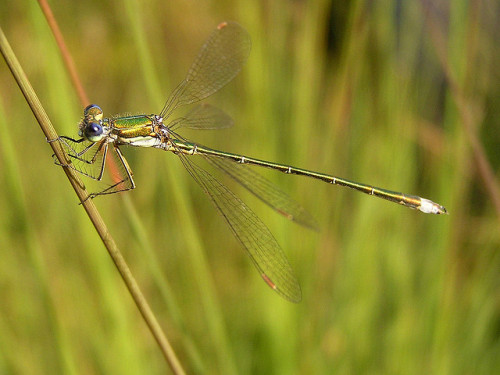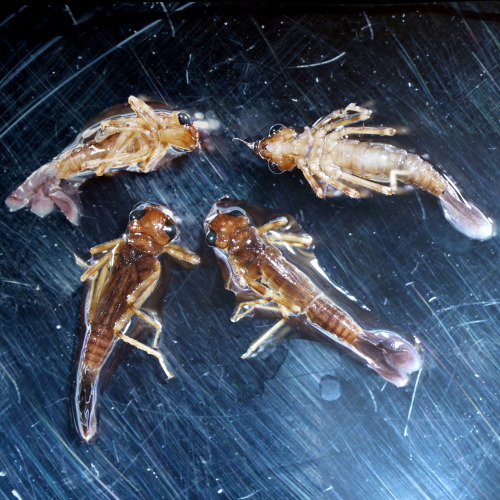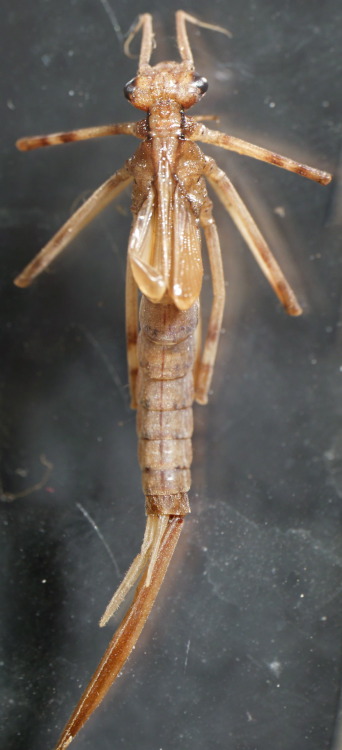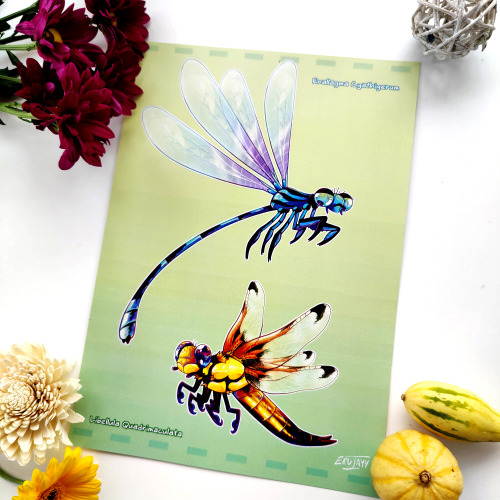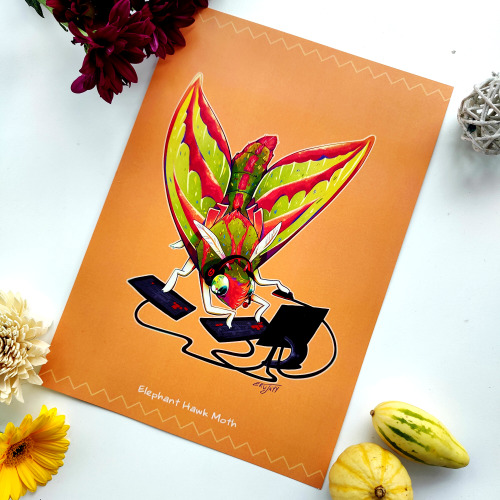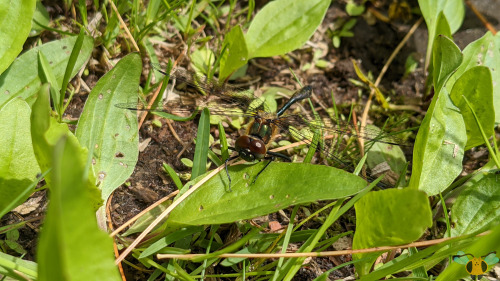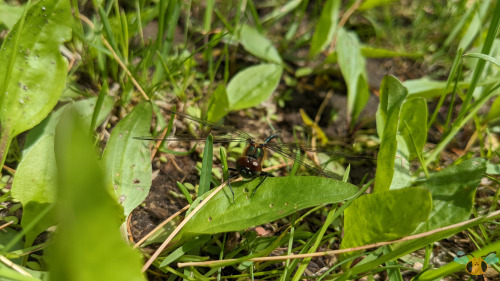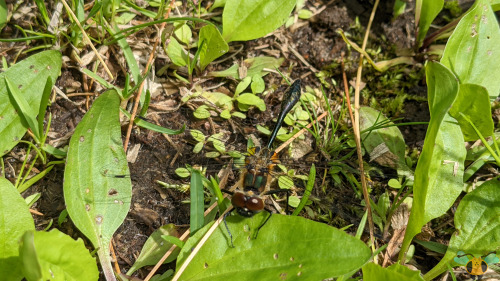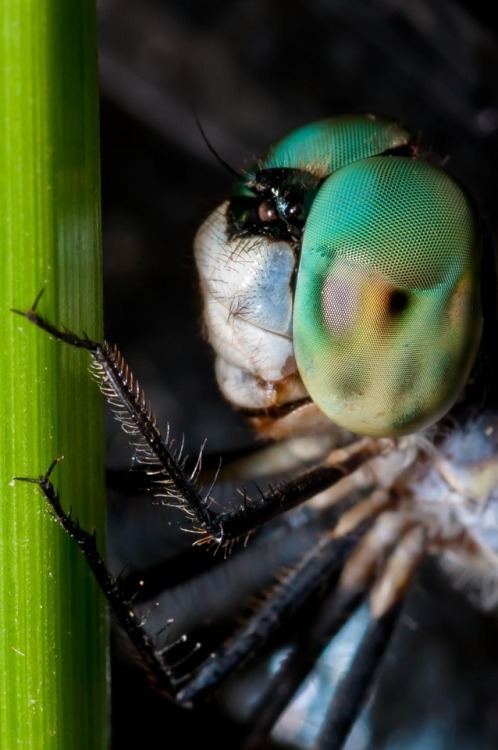#odonata
Sympetrum illotum “Cardinal Meadowhawk” Libellulidae
Washington Park Arboretum, Seattle, WA
May 9, 2016
Robert Niese
There are quite a few species of red dragons in the PNW and they can be pretty tricky to ID. The redder individuals tend to be males, and, as they mature they often lose all other markings that might facilitate identification. This species is most easily distinguished by the two white dots present on the lower sides of its abdomen (barely visible here). Even in very red, healthy, mature adults, the lower margins of these white dots are usually still visible. Generally, Cardinal Meadowhawks can also be distinguished from other red meadowhawks by their reddish legs, diffuse yellow-bronze wings, and black markings at the base of the wings.
Post link
Sympetrum corruptum “Variegated Meadowhawk” Libellulidae
Blue Mountain National Recreation Area, MT
May 13, 2016
Robert Niese
As its name might suggest, these dragonflies are quite variable. So much so, that I’m questioning this ID (corrections would be very much appreciated). For more info on how to identify PNW odonates, check out this field key from the Slater Museum of Natural History. S. corruptum is a relatively common dragon found throughout much of northern North America near boggy meadows, swamps or ponds. During migration, however, it can be found wandering through just about any habitat from Honduras to Mongolia. Dragonflies are impressive migrators and some species can regularly travel 100 miles in a single day.
Post link
Ischnura elegans - Blue-tailed Damselfly - Agrion élégant - 29/06/12byPhilippe_Boissel on Flickr.
Ischnura elegans
Post link
Calopteryx virgo - Caloptéryx vierge (♀) - Beautiful Demoiselle - 08/06/11byPhilippe_Boissel on Flickr.
Calopteryx virgo
Post link
Dragonflies in the clubtail family (Gomphidae), such as spinylegs and the dragonhunter, typically breed in streams and other clean, well-oxygenated bodies of water. Their nymphs most often bury themselves in sand or mud, so if there is insufficient oxygen penetrating the substrate they’ll have difficulty breathing.

In peninsular Florida, the cool, oxygenated aquatic habitats that most gomphid nymphs require are rare, so there is less gomphid diversity compared to more northern areas. One of the most common gomphids that does occur is the two-striped forceptail (Aphyllawilliamsoni), which utilizes stagnant bodies of water with muddy bottoms. Its nymphs have a long, snorkel-like extension on their abdomen that allows them to breathe while buried in the anoxic layers of mud.


Calopteryx maculata making a shameless public display of the freaky and convoluted way odonates mate
A few Argia sp. from the family Coenagrionidae, members of the suborder Zygoptera (damselflies) and order Odonata.
Collected from the Boras River in Essex Co., NY.
Post link
I have finally come across the Microsoft Ice software on the lab computer, enabling me to take close up pictures of larger organisms at high magnification and seamlessly stitch them together!
This is Calopteryx, a genus of broadwinged damselfly in the family Calopterygidae. Found in moderate, flowing current, usually on subaquatic vegetation, or on grasses the hang into the water. They blend in very well to thick clumps of vegetation, letting them sneak up on prey, and away from predators.
Genus:Calopteryx
Family: Calopterygidae
Suborder: Zygoptera
Order: Odonata
Collected in Trucka Brook, Adirondack Park.
Information in part from J Reese Voshell, 2002.
Post link


リュウキュウギンヤンマ
美しい青と緑。
R4.4
石垣島
FUN BUGS REAL?!
Yes!!! You thought I was done?! NO! Watch these awesome prints of your beloved little bugs now be real!!
A4 on 300gsm glossy paper. A steal!
Link in source and replies!
Post link

Would you let these polite fellows into your home?
Racket-Tailed Emerald - Dorocordulia libera
As promised, another beautiful insect from the Muskoka cottage scene by the lake. This one has wonderful shades of metallic green on its thorax plates which make it a sight to behold if you find one. You may think that those vibrant colors are what give this insect its name, and while there is a bit of truth to that, the real answer is much more interesting, and I truly wish these pictures could showcase what I’m about to describe. Belonging to the family CorduliidaeorEmerald Dragonflies, this new family is a first for the blog, joining the quick Skimmers (Libellulidae) and the large Darners (Aeschnidae) (and the one Clubtail also found in cottage country). The Emerald family received their name from the vibrant green eyes that most species tend to display when they fully mature. You’ll need to look at other pictures for reference, but I promise you, these eyes are saturated with a lush light-green. This specie can have that eye color too, but sadly not this individual, which leads me to deduce that this individual may be an “immature” adult, needing a little more time in the sun.
While other Dragonflies have differing male and female characteristics, both males and females can have green eyes, at least from what I’ve read and seen. This in mind, there’s a much easier way to tell male and female Emeralds apart: look to the tips of their abdomens! No matter what eyes they have, the males will have three prominent claspers and females have an elongated plate and/or diminished claspers on the abdomen tip. The pictures here don’t really show the best view of the abdomen, but I see no claspers. With this information in mind, I’ll know what to look for next time. Continuing on, as the name suggests, the widened tail tip has given this beautiful creature its name, “racket tail”. Keep an eye out for this feature if a green-eyed Dragonfly zooms by you. Also, while the top of the body shows greens of various intensities, the undersides of this Dragonfly are striped with yellow. She is truly stunning and will likely go on to birth several new Dragonflies that will call the lake in front of the cottage home in their young naiad forms. After spending their days hunting prey in the water, they too will emerge will emerald coloration to hunt the many flying insects of the cottage environment. MidgesandMosquitos provide an all you can catch buffet for them, and there are larger insects to try and catch such as the elusive Alderfly.
Pictures were taken on May 28, 2022 in Muskoka with a Google Pixel 4.
Post link

An uninvited guest at the Moth Morning; blue-tailed damselfly!
#dragonfly #odonata #insects_macro #insectsofinstagram #insectmagazine #insectagram #insect #macrolovers #macroworld #macrophotography #macro #macropicture #naturelover #natureofthailand #naturephotography #biodiversity #fauna #morning
https://www.instagram.com/p/BxZYEOxn1UM/?utm_source=ig_tumblr_share&igshid=dl0fozvbeg4n
Post link

Female Blue Dasher




